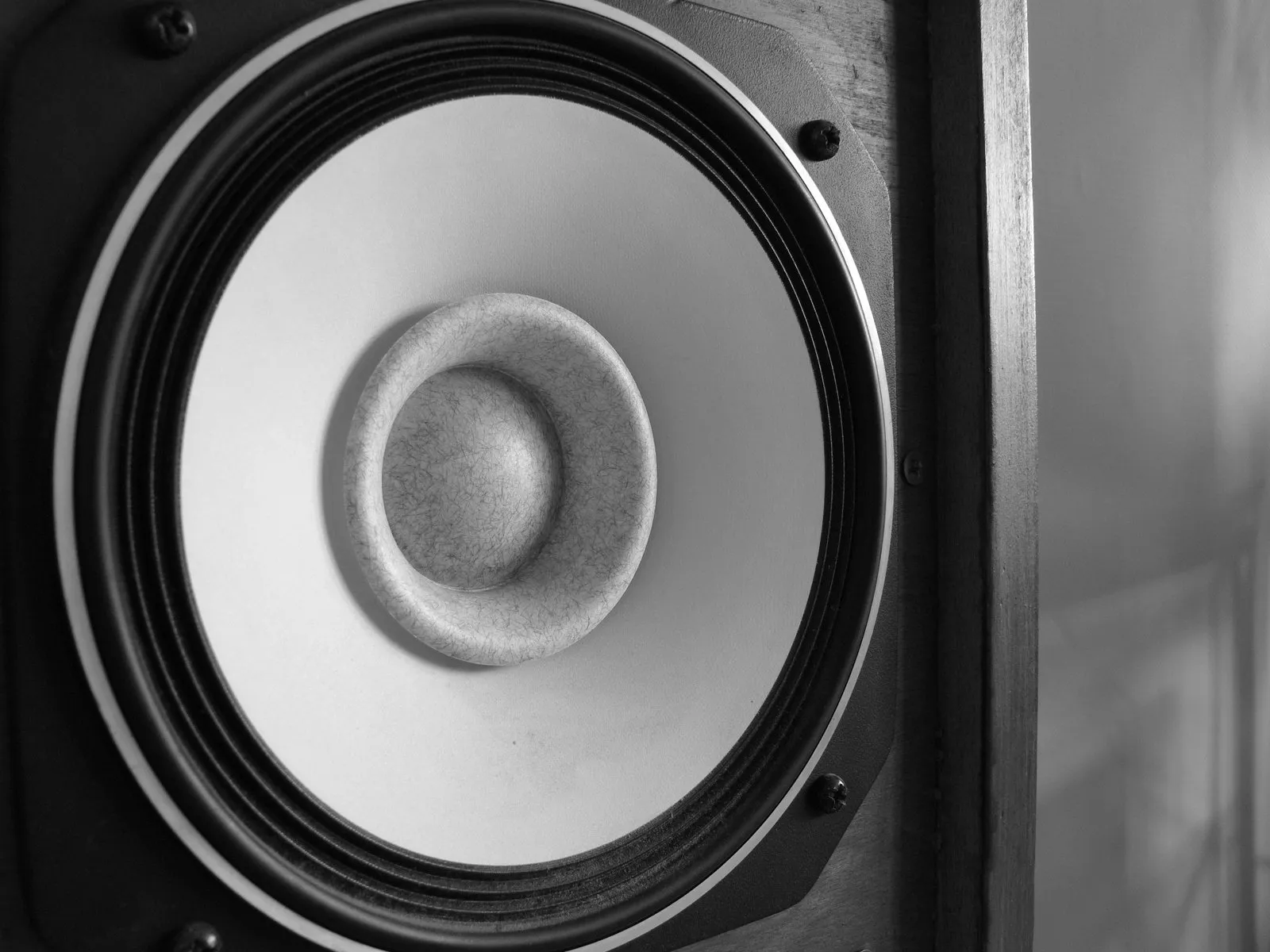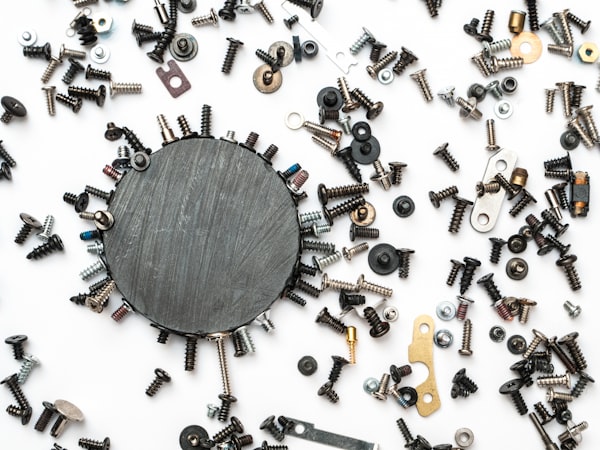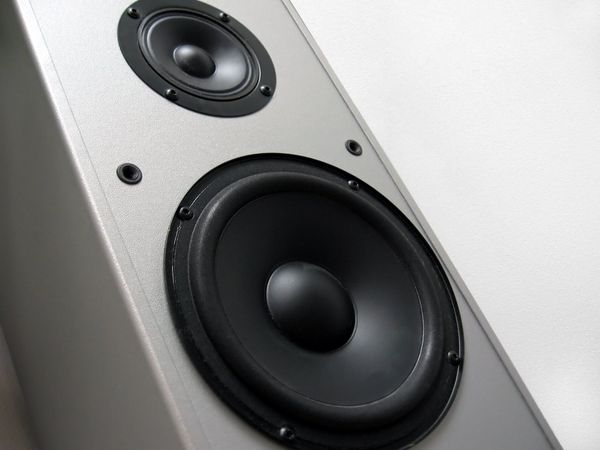If you have an older speaker and you want to buy a new one, making sure it’s the same size is very important so that it fits properly.
There are no standard measurements for loudspeakers, so you’ll need a way to measure your current speaker before determining what size replacement you need.
How To Measure A Speaker Size
The first thing you should do when buying a new speaker is to measure how big your old speaker is, as you want it to fit snugly in place! Unless, that is, you’re just going to fork out for a whole new system, but we’ll talk more about that in just a sec.
Step 1. Remove Your Speaker
To measure your current speaker, you’re going to have to get a little bit invasive, by which I mean you’ll need to remove the speaker itself from the protective housing. Don’t worry, though; as long as you have a trusty screwdriver to hand, you’ll be able to do this with ease.
If there are covers, remove them, then unscrew any mounting screws and shuffle your speaker free from its enclosure. Be gentle, as you don’t want to tug on any wires or sensitive electronics, especially if you plan on keeping or selling the current speaker.
Step 2. Measuring Diameter
At the widest point of your speaker’s mounting frame, check the diameter, then note your measurement down for reference at a later date.
Step 3. Measuring Cutout Diameter
Next, you’ll need to take the cutout diameter, which is the second-widest ridge of your speaker. It’s the bit that sits inside the mounting frame. Again, note this down for use later on.
Step 4. Measuring Speaker Height
Now we move onto speaker height, or depth depending on how you look at it. This just measures from the back of your speaker to the front of your speaker.
Step 5. Measuring How Far The Speaker Extends From The Mounting Frame
And finally, the last measurement should detail how far the speaker juts out from the enclosure when mounted. This will be your smallest measurement.
Measuring Mount For New Speakers
If all you currently have is a speaker enclosure, and you need to figure out what dimensions a speaker will need to fit flush within it, you can do this by taking a few choice measurements.
Step 1. Mounting Section Diameter
This is a simple measurement from one side of the mounting section to the other, which tells you the maximum size of speaker you can replace your current one with.
Step 2. Mounting Hole Inside Diameter
This is exactly the same measurement as the one done in step 3 to figure out the cutout diameter. It measures the mounting hole itself from edge to edge.
Step 3. Enclosure Depth
Next up, flip your enclosure on its back so you’re looking down through the hole, then simply take your ruler or tape measure and measure how deep the hole is.
This gives you a ballpark figure in regards to speaker height. Just make sure you choose something at least a little shorter than this measurement, as you don’t want the back of your new speaker rubbing up against the back of the enclosure.
Step 4. Screw Pattern
Here, all you have to do is measure the screw pattern by placing your ruler between each screw hole. Once you have this measurement, you can look for a speaker that has a matching pattern. Alternatively, you can drill new holes as long as all the other dimensions are a match.
How Much Do Speakers Cost?
Now you know how to measure for a new speaker, your next thought may be on the subject of cost. The cost of speakers depends on their size, material, and quality.
The most expensive speakers are made of wood and metal. Less expensive models are made of plastic and fiberglass. Some speakers even come preassembled and ready to go.
If you’re replacing your entire set of speakers, you can expect to spend anywhere from $50 to $1500 per pair. Higher-quality speakers tend to be more expensive because they’re better built, louder, and easier to install.
Some speakers have special features such as bass ports or tweeters. Bass port speakers are designed to provide deep bass tones. Tweeters are cone-shaped speakers that produce higher-pitched sounds.
What Size Should I Get?
The simple answer here is that you should use the measurements you’ve just taken to lead you to a speaker that’s right for your enclosure, and, of course, your ears.
As I previously mentioned, if you’re handy with a drill, you can engage in some DIY alterations to make an enclosure a better fit for a factory speaker that isn’t an exact match.
But, for the most part, if you want to make things easy on yourself, just look for an exact match.
Remember, size and power don’t always equate, so if you’re looking for something louder or with a wider frequency response, the chances are that you’ll be able to find it in the same dimensions as the speaker you’re replacing.
Then there’s the option of simply buying a whole new speaker system. If you do end up choosing this route, you can disregard all the measurements we’ve just spoken about, as your new speaker will come with a custom enclosure.
In this scenario, the only measurements you’ll need to trouble yourself with are those that document the size of the space you plan to place your new speakers.
Final Thoughts
And there you have, folks — these are the essential measurements you’ll need to take if you’re planning to re-house a speaker.
The first list of measurements detailed will help you if you’re looking to replace a current speaker, or if you’re looking for a fresh enclosure for a current speaker.
While the second list of measurements will help you find a new speaker for a vacant enclosure.
Whichever scenario you find yourself in, you should now have the know-how to get your speaker system up and running again — hooray!









Member discussion